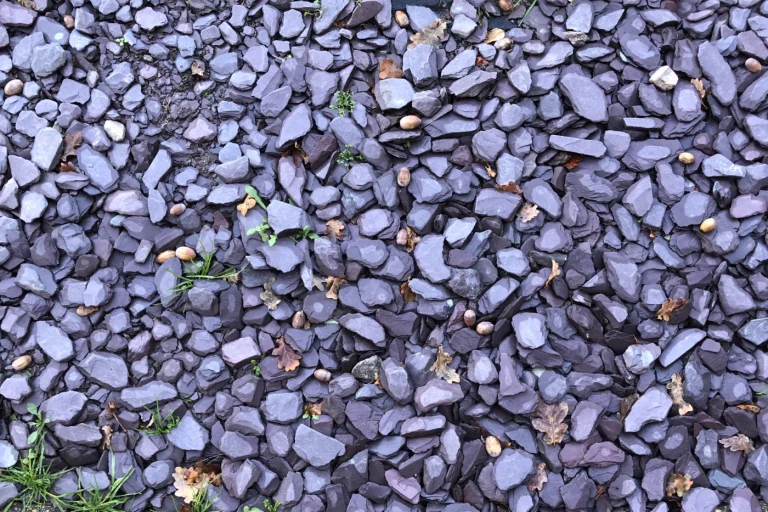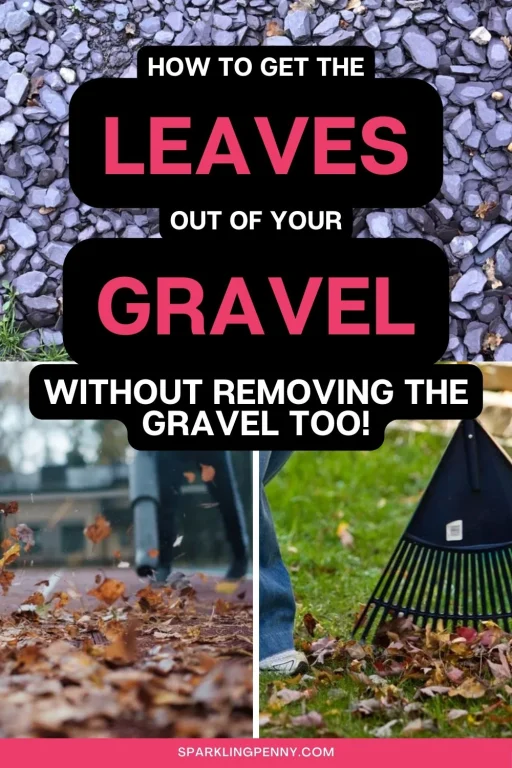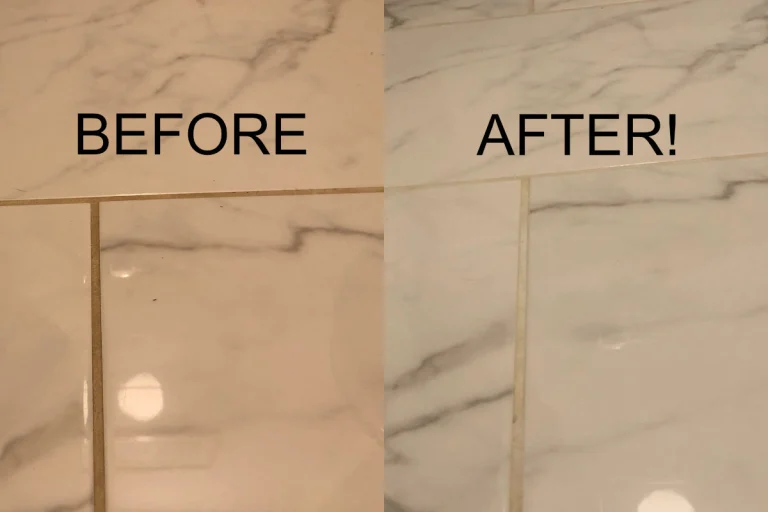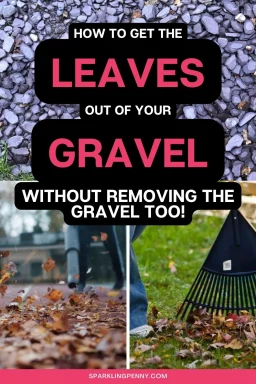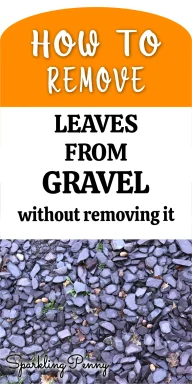Our house sits next to a huge old oak tree. Every autumn, it spews out a deluge of leaves and acorns. If we don’t keep on top of all the leaves, it builds up, and the job of tidying becomes pretty big and annoying.
We have leaves all over the driveway and the lawn, including the gravel area pictured above. It’s the worst place to deal with the leaves because it is far too easy to end up removing the gravel along with the leaves.
If you value peace and quiet as you tend to your garden, rakes will be the best option for you. Go for one with a flexible head that can gently tickle the ground, rather than churn it up.
If you prefer a mechanical option, make sure your machine has a low enough setting so that you don’t dislodge too much of the gravel at the same time.
Whatever method you decide on, you will have a much better chance of removing the largest volume of leaves if you attempt your garden clean-up on a calm, dry day.
Heads up: I sometimes use affiliate links. When you click these links and make a purchase, I may get a small commission. It won't cost you anything but it helps me to run this site.
Leaf blowers
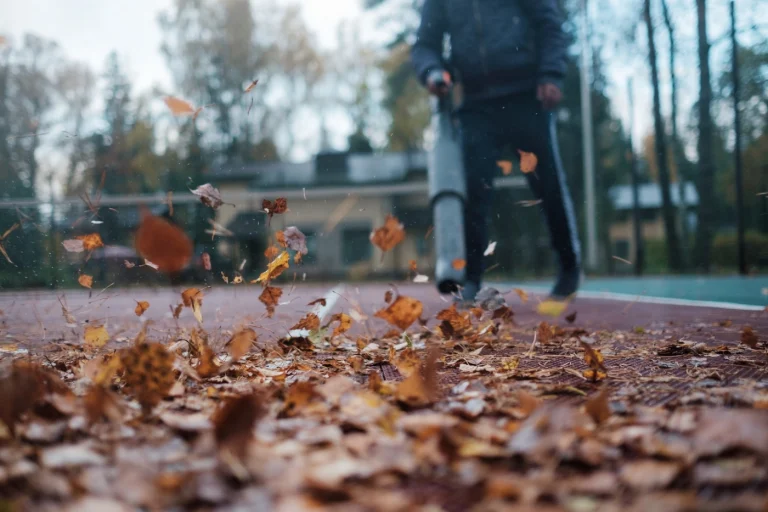
A leaf blower is a good choice if you have a lot of tidying to do at once.
- Choose a calm and dry day. The last thing you need is to have the leaves blow around again once you have them in a neat pile!
- Make sure the leaves are dry. Wet, greasy leaves will be difficult to remove. A good time to do the job of clearing them is after a frost, when they are firm and crisp.
- Safety first. Always wear goggles to protect your eyes from flying debris and ear defenders to protect your hearing.
- Select the lowest setting. Set your leaf blower to the lowest setting possible, so that you don’t displace the gravel as you work.
- Blow them into a pile. Blow your leaves into a pile away from the gravel area, and then bag up the pile as soon as possible.
- Use the leaves to feed your garden. Collect the leaves and use them a mulch for other areas of your garden. See below for tips on what to do with your garden leaves.
The best type of leaf blower for gravel is one that has a low setting so that you don’t risk blowing around the gravel at the same time. Some leaf blowers can also vacuum. That way, you can blow your leaves into a pile away from the gravel and suck them up at a higher setting.
Leaf vacuums
This option is most suitable for breezy days when you just can’t get your leaves to stay in a pile for long.
Here are some tips:
- Choose a dry day. A good time to clear your leaves is after a frost, when they are firm and crisp.
- Be safe. Wear safety goggles to protect your eyes from flying debris and ear defenders to protect your hearing.
- Select the lowest setting. Set your leaf vacuum to the lowest setting. You might wish to experiment in a small section to find out how high you set the suction before you start to suck up gravel.
Rakes
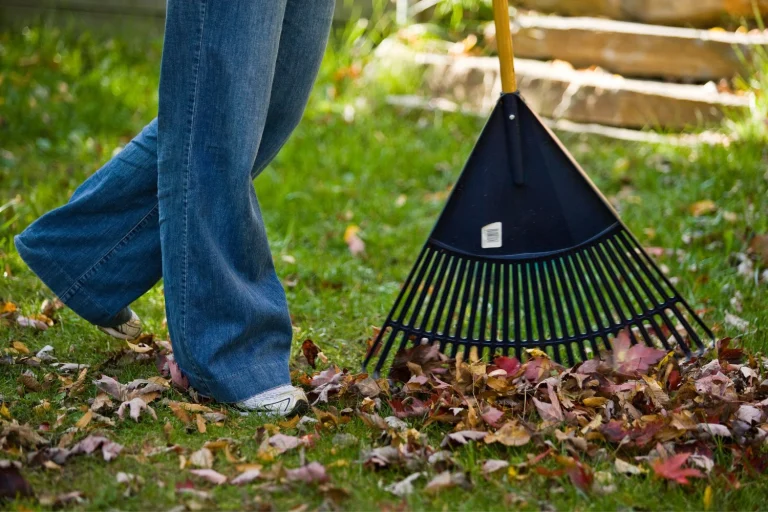
The problem with mechanical leaf blowers and vacuums is that they are often quite noisy! If you prefer a more relaxed option, and you don’t want to annoy your neighbors (!), a rake is a good option.
Here are some tips for raking your leaves of gravelled areas:
- Choose a suitable rake. You need a rake with flexible tines made from flexible metal, plastic or corn. Otherwise, you risk raking up the gravel along with the leaves.
- Do it on a calm day when the leaves are dry. Choose a day when the leaves and the gravel are both dry.
- Rake into a pile. Rake towards you using a light, flicking motion to pick up the leaves and not the gravel.
A flexible rake or broom is the best type for removing leaves from gravel. The best kind of rake is one with flexible tines in a fan shape, made with springy metal, plastic or corn.
This sort of rake is perfect for the job.
Corn brooms are also great for picking up leaves on gravel. I call them witches brooms.
Other methods for removing gravel
If you don’t have a leaf blower or a suitable rake, what other ways are there to remove leaves from gravel?
Here are two more options to consider:
By hand
Yes, you can use your hands too.
However, this approach is only suitable for a light dusting of leaves unless you have a lot of patience!
If you don’t let the leaves build up, removing them manually is the most effective option. Again, choose a dry day when the leaves will be easiest to remove.
Sifting
If your gravel is quite large, and the debris you want to move is generally smaller, sifting could be your answer.
This method can be pretty laborious, so it is best suited for a one-off job.
To sift your gravel, you will need some chicken wire or mesh. The holes must be smaller than your gravel. Lay out the mesh on a tarpaulin and shovel the gravel onto it. Then shake to sift out the debris.
What to do with the leaves
Now you have collected a pile of leaves. What is the best way to use them?
It’s important to note that; however careful you were, there may well be some stones in your leaf pile.
Stones make the leaves perfect for mulching areas that need well-drained soil to thrive.
However, bear that in mind that if you intend to shred your leaves, they could cause damage to your shredder.
Here are some ways you can use your gathered leaves:
- Compost whole. Dump them straight into your compost bin. According to Tom’s Guide, you can put whole leaves in your compost bin when you mix it with green waste. Whole leaves take longer to break down than shredded leaves, but you can still get a great result.
- Shred and then compost. If you can shred the leaves, they will break down quicker. Once shredded, store them in a compost bin and allow them to break down.
- Shred and spread. Simply shred your leaves and spread them straight onto your flower beds. This will insulate the plants that need it over winter. When the leaf matter breaks down, it acts as a great soil conditioner later on.
How to prevent leaves sticking to gravel
Here are my tips for making your fall/autumn job of clearing your gravel much easier:
- Don’t let the leaves build up. Do a regular clean-up. Once the leaves start to decompose and become sticky, they can be more difficult to remove.
- Switch to large stones. When choosing gravel for your driveway, choose larger stones that don’t dislodge so easily. If you have a cat problem, note that local cats are less likely to poop on larger, pointy gravel.
- Don’t be too picky. You will never get all the leaves, and they will be back, of course, so don’t fuss over picking up every little leaf ☺.

